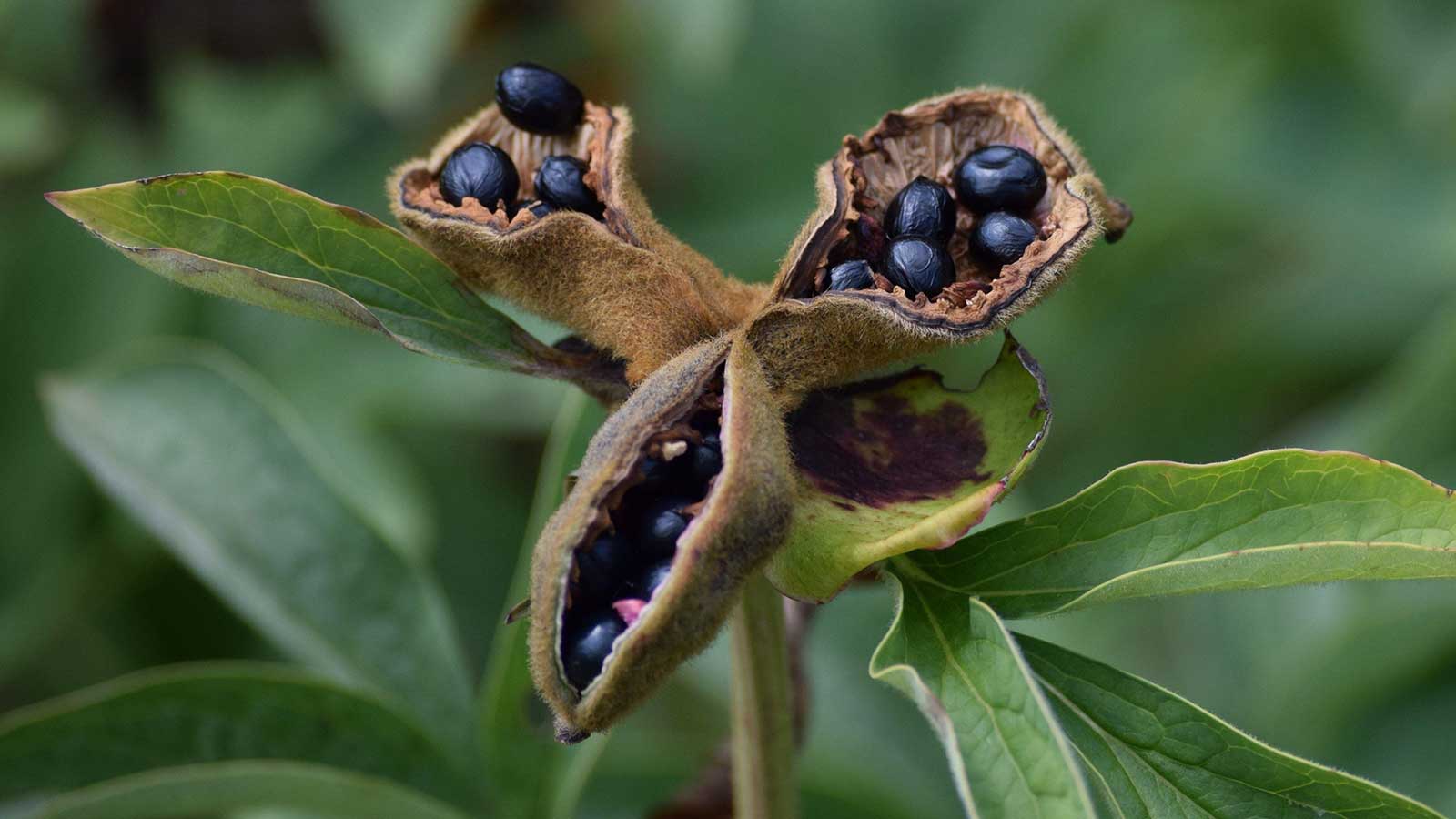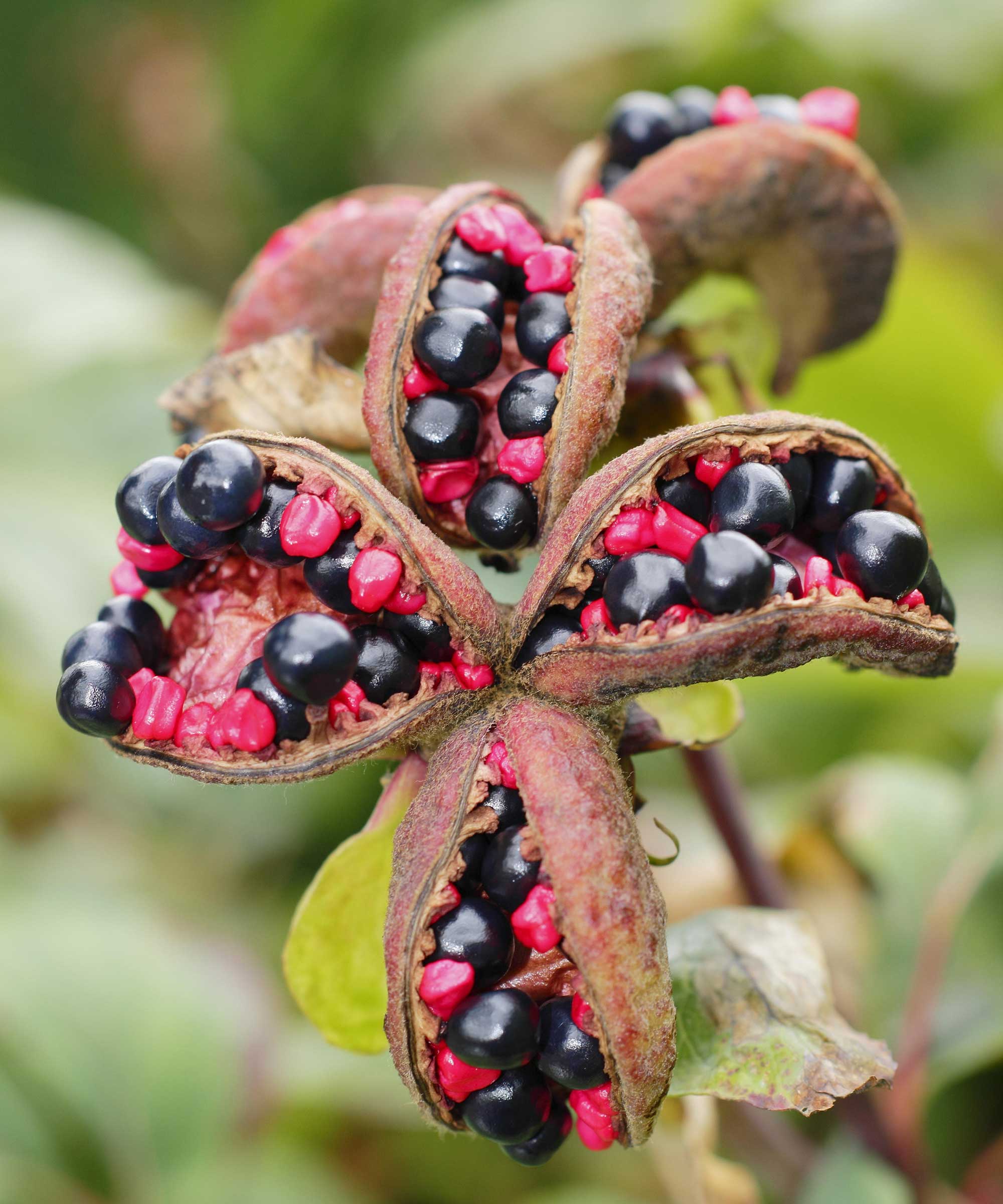How to harvest peony seeds – and sow new plants for your garden
Fill your yard with more of these fabulous flowers by collecting peony seeds this fall – it's easier than you might expect


Peonies dazzle in late spring to summer with their large, blousy blooms. And if you already have one plant, it's possible to make more.
Herbaceous peonies can be propagated by division, while layering works for tree peonies. However, with a little patience, you can also grow more of these show-stopping plants by collecting up the seeds and sowing them under cover. It's an enjoyable and affordable task – so why not have a go this fall?

Peonies offer large, vibrant flowers
How to collect and sow peony seeds
If you want to grow more peonies from collected seeds, avoid the classic deadheading mistake of removing all the spent blooms, else you'll have no seedpods left to harvest.
Instead, keep a few flowerheads intact, allowing the seedpods to turn dark brown and the seeds inside to ripen. This is when they are firm and relatively loose within the seed capsule, says gardening expert John Negus.
Then, follow the five steps below:
- When the seedpods are ready to be harvested, snip them from the plant using sharp and clean pruners, cutting just above a healthy set of leaves.
- Break each seedpod open with your hands, and collect up the large seeds inside. The Royal Horticultural Society says that the viable seeds will be black – any red ones have not been fertilized and should be discarded.
- Sow them shallowly in pots of proprietary seed compost augmented with a quarter part, by volume, of coarse grit, John says.
- Then, put them in a cold frame or a similar structure and be patient; they can take a year or more to germinate.
- 'When planting them out, remember that although they like moist soil, new plants don’t take kindly to being overwatered,' John adds. Also, ensure they are in a sheltered spot that gets a good amount of sun.
Alternatively, you can sow the seeds directly in well-prepared soil, says John. Add grit, if necessary, to ensure good drainage. Then, cover the seeds with jam jars firmly implanted in the ground.

John has been a garden journalist for over 50 years and regularly answers readers' questions in Amateur Gardening magazine. He has also written four books and has delivered many talks over the years on horticulture.

The large seeds are easy to handle
Can you store harvested peony seeds?
Just like when harvesting coneflower seeds, you can store peony seeds in paper envelopes, if you don't want to sow them immediately. Remember to label them clearly, with the date included, and store them somewhere cool and dry.
Design expertise in your inbox – from inspiring decorating ideas and beautiful celebrity homes to practical gardening advice and shopping round-ups.
Stored peony seeds can be viable for many years, but fresh seeds tend to have better germination results.

Peonies are a beautiful cut flower
How long will peonies grown from seeds take to flower?
Don't expect your newly-planted peonies to take the spotlight in your flower beds quickly – they can take several years to perform.
'The best way to speed flowering is to feed them with sulfate of potash,' says John. The Sulfate of Potash 0-0-50 Fertilizer from Cz Garden Supply Store at Amazon is well-rated. He suggests sprinkling it over the root area, monthly, from mid-spring until the fall, watering it in.
It's worth the wait. 'In time, when your charges flower, you may find that they are similar to, or even better than, the parent’s blooms,' John says.
Peonies make excellent cut flowers, and there are all sorts of gorgeous ways to style them in the home. So, not only does growing them from seed give you extra blooms to admire in your garden, but it will save you money at the florist, too.

Holly started writing about gardening five years ago, and she is a regular contributor to Homes & Gardens. She has also written many gardening features for Woman & Home and Real Homes, too. She has previous experience as a professional gardener, where she helped to plant and maintain private gardens. Holly has also looked after allotment plots over the years and loves to grow her own flowers and veggies from seed. In her spare time, she enjoys visiting local gardens, botanical drawing, and tending to her ever-growing collection of houseplants.